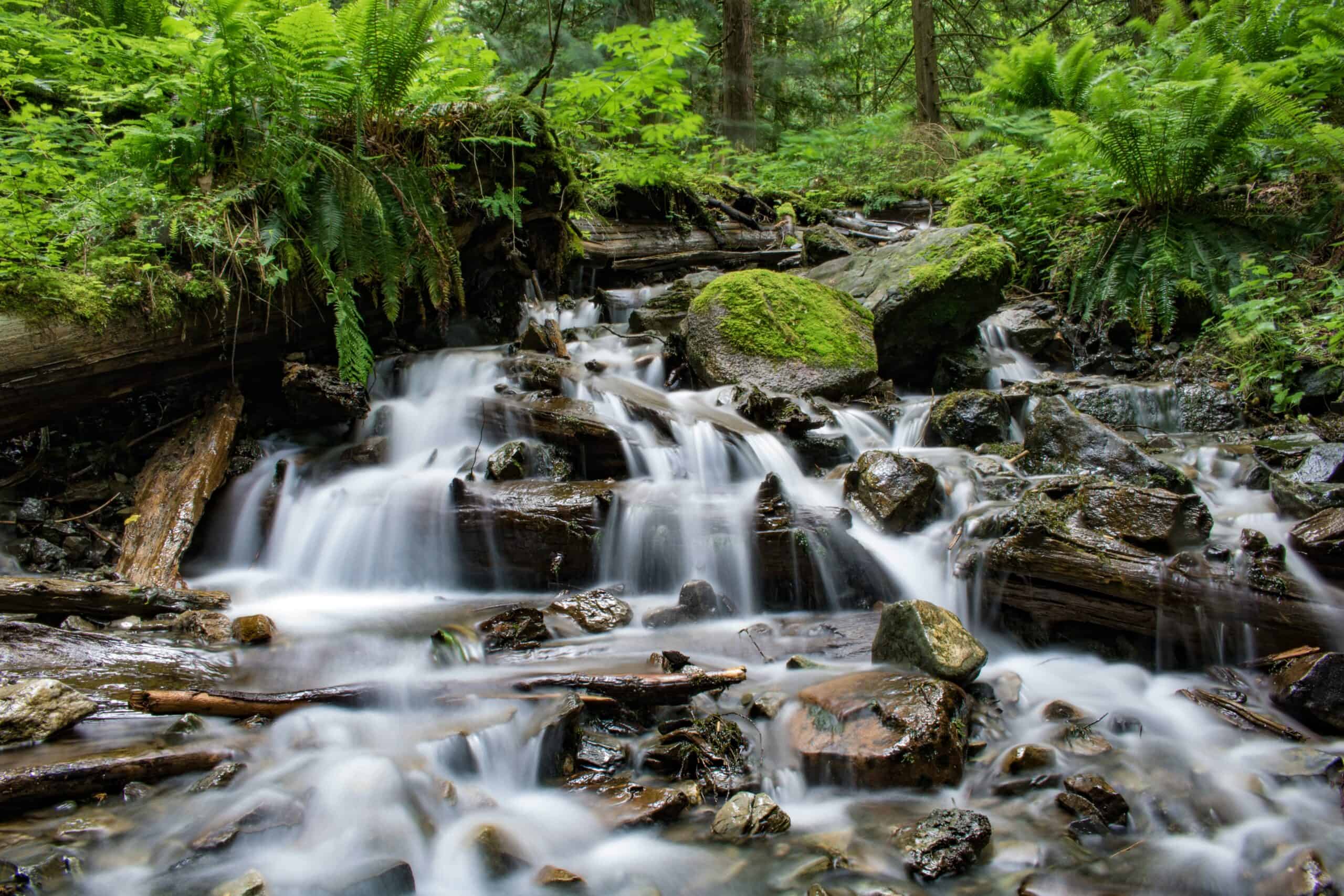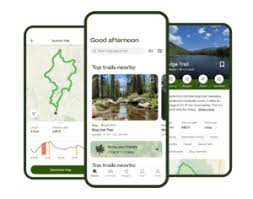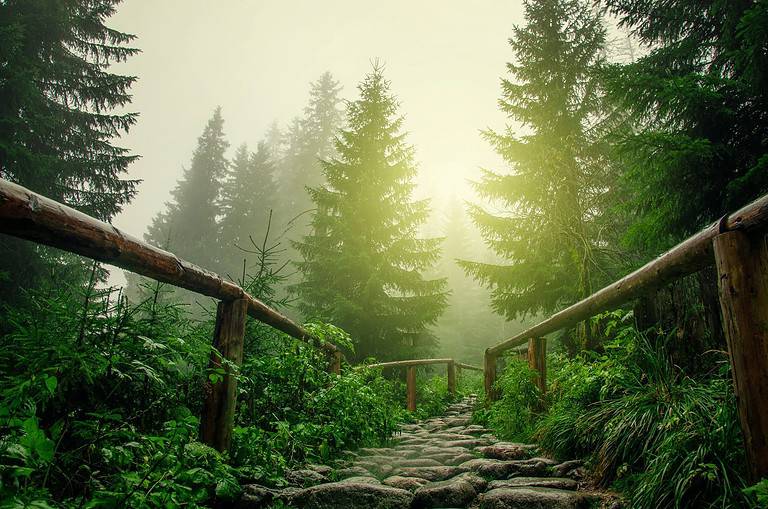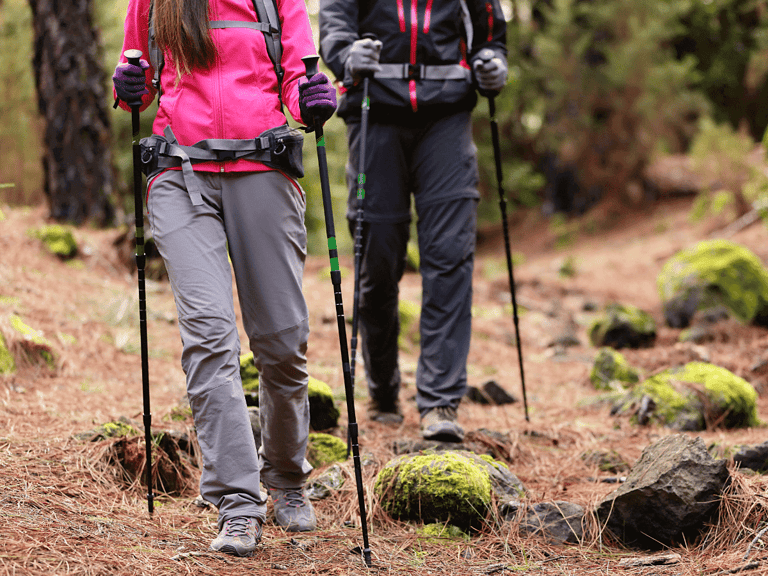12 Essential Tips For Day Hiking On Difficult Trails
As an avid hiker, I have completed many day hikes across the country in our national forests and state parks, from Glacier to the Appalachian Mountains. I’ve come to appreciate the importance of proper preparation and planning. Through countless hikes and personal experiences, I’ve learned invaluable lessons that have shaped my approach to each day’s hiking adventure.
While these tips may appear simple, trust me when I say that I’ve learned them the hard way. It’s through those challenging moments that I’ve realized the significance of taking the time to think through and prepare for each hike. I use these tips as a checklist to ensure I have everything I need before hitting the trail, making my hiking experience more enjoyable and rewarding.
I can’t stress enough the importance of physical conditioning as well. You may not think you need it if you are only day hiking, but I believe in training according to the demands of the specific trails. By preparing myself physically, it not only enhances my performance but also reduces the risk of injuries
So, whether you’re a fellow hiking enthusiast or off for a weekend hiking adventure, let me share with you twelve essential tips that will enhance your day hiking experiences. With these tips, you’ll be well-prepared to explore the trails with confidence, respect, and a deep appreciation for the incredible beauty that surrounds us. Get ready to create unforgettable memories and embrace the joy of hiking.
Key Statistics On Hiking
- There are around 57.8 million hikers in the US.
- The National Trails System consists of around 193,000 hiking miles.
- The National Trails System includes 200,000 miles of trails located on federal lands.
- The National Trails System has been very beneficial, allowing for 9 million backpackers and 8 million mountain bikers on the trails alongside hikers
What Is The Difference Between Day Hiking vs Thru Hiking?
Thru-hiking is hiking a long-distance trail from start to finish within a single, uninterrupted journey. It involves hiking the entire length of the trail, covering hundreds or even thousands of miles, often crossing multiple states or countries. Thru-hiking is a significant undertaking that requires physical endurance, mental strength, and careful planning.
Thru-hikers typically carry all their necessary gear, food, and supplies with them throughout the journey, either in a backpack or by resupplying at designated points along the trail. They usually camp outdoors or stay at designated shelters or campsites along the way. Thru-hiking often takes several weeks or months to complete, depending on the length and difficulty of the trail.
Major long-distance trails that attract thru-hikers include the Appalachian Trail (AT) in the United States, the Pacific Crest Trail (PCT) spanning the western states of the U.S., and the Camino de Santiago in Spain.
There is a difference between backpacking and thru-hiking. Mostly in speed. Thru hikers have a limited amount of time to complete the whole trail before portions of the trail are closed down due to weather. So time is a key factor, and so is pack weight. How much do you carry.
While backpacking can involve overnight and many days of hiking, The length of hiking is shorter so gear weight is not a driving factor.
According to the Appalachian Conservancy, about three million people visit the Trail every year. More than 3,000 people attempt a thru-hike of the entire A.T. each year, with about a 25% of those completing the Trail. That’s about 750 that complete the whole trail.
What Is Day Hiking?
Day hiking is going on a hike or walk in nature that is completed within a single day. Unlike thru-hiking, which involves extended journeys covering long distances, day hiking typically involves shorter hikes that are completed within a few hours. We normally hike 4-7 hours on one of our many day hikes.
Day hikes vary in length and difficulty, ranging from easy strolls along well-marked trails to more challenging hikes that involve steep terrain or significant elevation gain. You get all the benefits of being outdoors without the commitment of overnight stays.
Day hiking is more about minimalism. You typically carry a smaller backpack with essentials such as water, snacks, a map, and appropriate clothing for the weather conditions. They may explore local parks, nature reserves, mountains, or any other hiking trails accessible within a day’s trip from their starting point.
It is a great outdoor activity for all fitness levels and ages.
How Far Can You Hike In A Day?
It really does depend on several factors.
Hiking Distances and Walking Rates:
The distance you can cover in a day largely depends on your walking rate, which definitely varies depending on the terrain, elevation changes, and your fitness level. While an average hiker can maintain a speed of around 2 to 3 miles per hour (3.2 to 4.8 kilometers per hour) on flat terrain, this can decrease significantly with challenging uphill climbs or rough terrain. We have been on 2-mile hikes that have literally taken 2-3 hours.
Easy Trails: On good, relatively flat trails, you can usually cover a distance of 8 to 12 miles (12.8 to 19.2 kilometers) in a day. You’ll have plenty of time to enjoy your surroundings and make frequent stops at an average walking rate of 2.5 to 3 miles per hour (4 to 4.8 kilometers per hour).
Moderate Trails: With moderate terrain, including lower elevation changes, you can normally hike around 6 to 10 miles (9.6 to 16 kilometers) in a day. The changes in terrain might reduce your walking rate to approximately 2 to 2.5 miles per hour (3.2 to 4 kilometers per hour). I would advise you also to factor in your rest breaks and time for lunch.
Challenging Trails: Trails with steep elevations or rugged and rocky paths can reduce your hiking speed and overall distance covered considerably. On these types of trails, you can expect to cover approximately 4 to 8 miles (6.4 to 12.8 kilometers) daily, with an average walking rate of 1.5 to 2.5 miles per hour (2.4 to 4 kilometers per hour). We have consistently experienced these hiking rates hiking more difficult trails.
Trail Difficulty:
The difficulty level of a trial is also important. If you are using an app like AllTrails, they will rate each trail as to its level of difficulty. Trail difficulty includes elevation changes, trail conditions, obstacles, and overall terrain ruggedness.
Easy Trails: These trails are typically well-marked, relatively flat, and suitable for hikers of all experience levels. They often have gentle slopes, minimal obstacles, and good footing. Ideal for beginners, easy trails allow you to cover longer distances in a day.
Moderate Trails: Moderate trails present some challenges, including steeper ascents or descents, uneven terrain, and occasional obstacles like fallen trees or rocks. Hikers with moderate experience and reasonable fitness levels can enjoy these trails while covering a decent distance.
Challenging Trails: These trails demand higher fitness, experience, and technical skills. They can involve steep climbs, rocky sections, exposed areas, and potentially hazardous conditions. Hiking shorter distances allows you to allocate sufficient time to navigate challenging terrains safely.
What Are Our Day Hiking Tips?
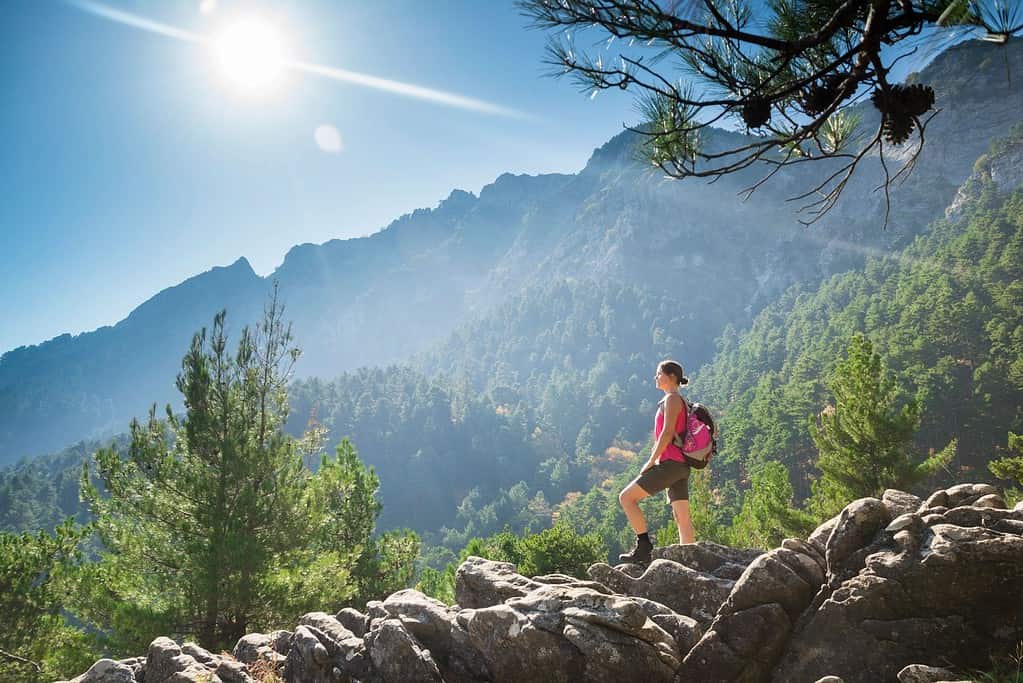
1. Start With A Good Plan
Planning is the first crucial step in any endeavor, and day hiking is no exception. Begin by conducting thorough research on the trail you’ll be tackling. Use topographic maps and trail guides to familiarize yourself with the route’s distance, the terrain’s nature, and significant landmarks.
Pay attention to areas with substantial elevation changes and rocky terrain. Such information can help you predict the challenges you might face and prepare accordingly.
Also, it’s important to check weather forecasts for your hiking day. Unfavorable weather can turn a challenging hike into a dangerous one.
Finally, always let someone know your hiking plans, the trail you’ll be following, and when you expect to return. This ensures that someone will know where to look for you in case of emergencies.
All Trails is the app that we use and have used for years. One of the best on the market. We like it so much that we have the paid version. There is a free version available also.
2. Pack the Essentials
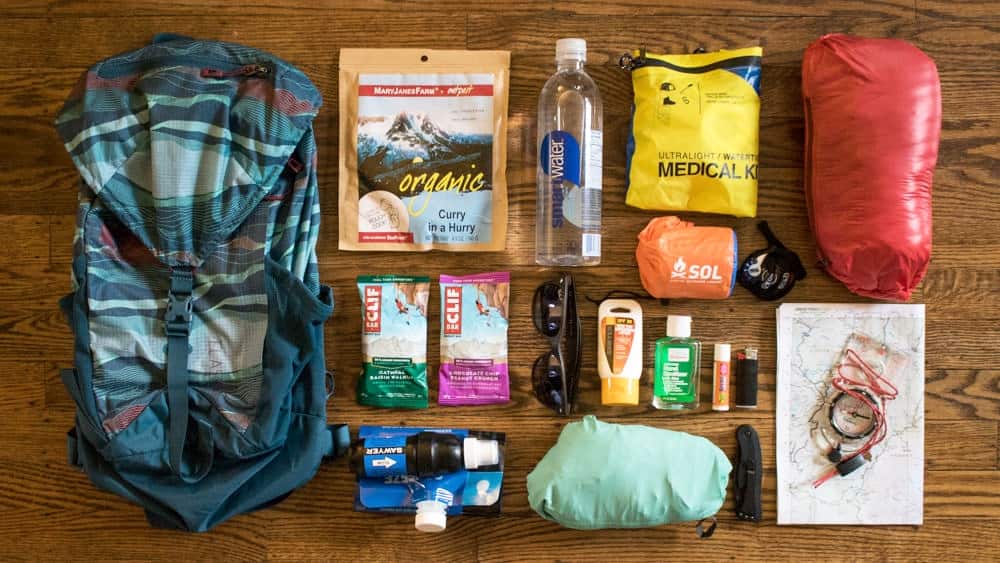
You don’t need a lot, but a well-packed backpack can make the difference between an enjoyable hike and a challenging ordeal. When you are day hiking, it is key to ensure you have with you what you will need.
Essential items include a map and compass for navigation, a first-aid kit for any medical emergencies, a small flashlight for situations where you may find yourself hiking in low light, a compass, and a multi-tool or knife.
Please make sure you carry sun protection items such as a hat, sunglasses, and sunscreen. This is very important.
Carry food, like high-energy snacks, extra water, and electrolytes to keep you hydrated throughout the hike. While you may not think you need these items for day hiking, you should always have some with you. We use bladders in our backpacks, but bottle work fine, also.
It is good to wear some clothes that can dry rapidly and some extra layers in case of weather changes or if you need to spend a night outdoors.
Don’t forget bear spray.
3. Wear the Right Gear:

The right gear can enhance your day hiking experience significantly. When navigating rocky trails or riverbeds, it is crucial to have sturdy hiking boots with good ankle support to prevent sprains, a non-slip tread to provide a better grip, and waterproof features to keep your feet dry. Consider the weather and the time of year when choosing your clothing.
Hiking boots and hiking shoes are a major improvement in comfort over wearing running shoes or sandals. The materials used in the soles allow you to go over all types of rocks, gravel, and roots without feeling them. Trust me; your feet will hurt less and be less tired.
Dress in layers to adjust your clothing to the changing temperatures during the hike. When day hiking the weather can change significantly from the start of your hike to the end. We have some technical lightweight base layers for cooler hikes that we can take off as the day warms up.
Choose breathable fabrics to wick away sweat and keep you comfortable. Remember a hat and sunglasses for sun protection and gloves for handling rough terrain or if it gets cold.
4. Mind Your Footing:
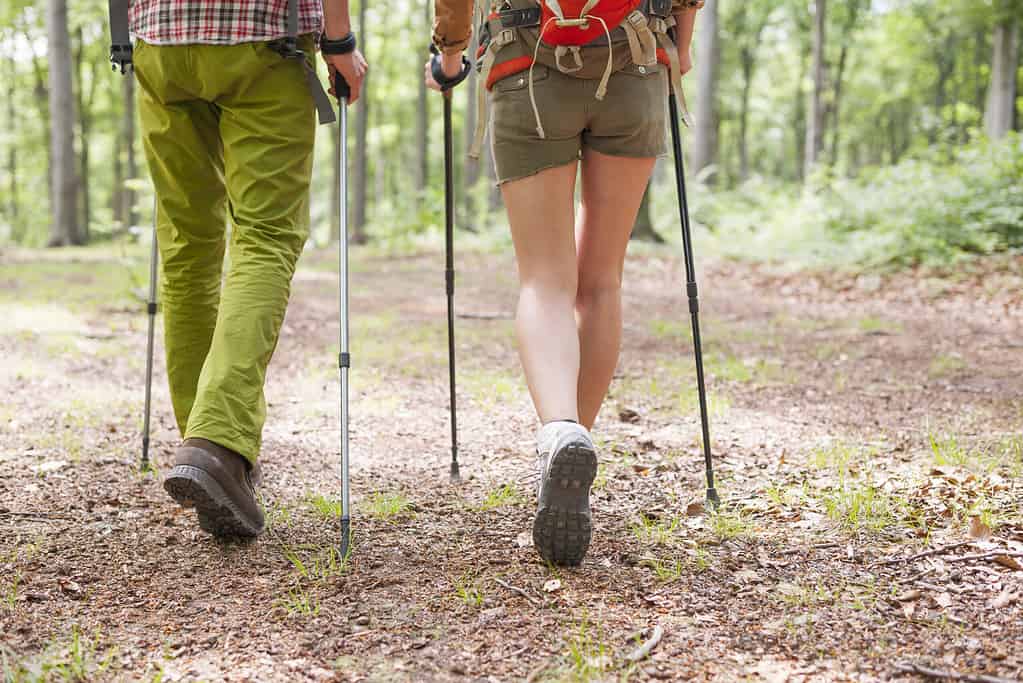
On rocky trails and riverbeds, every step matters. Watch where you place your feet to avoid tripping on loose rocks or stepping into holes.
A trekking pole can provide extra support and help maintain balance when hiking on uneven surfaces. Trekking poles were a game-changer for us. It makes descending (steep and more moderate descents) so much easier and helps you keep your balance, and is great for crossing water hazards.
We use collapsible poles that are lightweight. We use bungees to attach them to our backpacks when we hike. We started with one, but now we always carry two.
These were lessons learned. Poles, water shoes, and extra pair of dry socks.
Lightweight, Collapsible Hiking Poles (on Amazon)
5. Proper Hydration and Nutrition:
Staying hydrated and well-fed is critical on a challenging hike. Carry enough water for your entire journey, and remember to drink regularly, even if you don’t feel thirsty. Stay hydrated.
We also carry a water purification straw with us as part of our emergency kit. As for food, we opt for high-energy, lightweight, and non-perishable snacks like nuts, dried fruits, and energy bars. You need the extra calories to fuel your body during hiking.
6. Pace Yourself:
Hiking, especially in challenging terrains, is not a race. This is especially true in day hiking. It’s a journey to enjoy and experience.
Set a steady pace that you can maintain for the duration of your hike. This is crucial on trails with significant elevation changes. A too-quick pace can tire you out early, leaving you struggling later in the hike.
Take regular breaks to rest, enjoy the scenery, and take photos. Listen to your body and slow down or rest if you feel tired or experience discomfort. It’s important to remember that the goal is not just to reach your destination but also to enjoy the journey.
7. Be Respectful of Nature:
Practice the “Leave No Trace” principles, which entail leaving the places you visit as you found them, or better.
When we do day hikes, we always pack a lunch and eat in a beautiful spot on the trail. We also pack it up and put it in our backpacks until we get back to the trailhead and can dispose of it properly.
We usually carry our food in a plastic bag when day hiking and just throw everything back in the bag when we are finished.
Avoid disturbing wildlife or plants, and stay on the designated trail to minimize your impact on the environment.
8. Train in Advance:
Hiking in challenging terrains requires physical fitness. Before we go on our hiking trips, we start getting in shape. If we know we will hike difficult elevations, we hit the incline treadmill and stair stepper and do some good weight work.
We also take longer walks to get our bodies used to being on the trail for several hours. Even when day hiking you encounter difficult terrain, so be prepared.
Engaging in regular exercise weeks or even months before your hike is a good idea. Focus on exercises that strengthen your legs, like squats, lunges, and step-ups, as your legs will do most of the work during the hike. Core exercises like planks and back exercises like deadlifts can help improve your overall balance and stability.
Cardio exercises such as running, cycling, or swimming can boost your stamina, making you better equipped to tackle long and strenuous hikes. Include some hill workouts in your training to prepare for the elevation changes, if possible.
9. Learn Basic First Aid:
Injuries happen on hikes, and knowing basic first aid can be a lifesaver. Our first aid kit has gotten a little bit bigger over the years as we have had small issues occur on the trail.
You need items for common hiking injuries like blisters, sprains, cuts, or insect bites. Your kit should include bandages, antiseptic wipes, tweezers, medical tape, painkillers, and your medications. Remember, your first-aid knowledge and kit are not just for you; you could come across other hikers who need help.
First Aid Kit for Day Hiking (on Amazon)
10. Prepare for the Unexpected:
Even with the best planning, things can go wrong. The weather can change, or you lose your trail. That’s why knowing some basic survival skills can be helpful.
Learn how to start a fire, as it can keep you warm, cook your food, and signal for help. Learn different distress signals and when to use them. We always have a small flint with us.
Carry a whistle as its sound travels further than your voice and requires less energy to use. If you’re hiking in an area with cell service, carry a fully-charged phone. However, don’t entirely rely on it, as batteries can die and signals can be unreliable in the wilderness.
11. Know When to Turn Back:
Finally, and importantly, understand your limits and know when to turn back. You might be eager to reach your destination, but it’s better to abort the hike if conditions become dangerous or if you’re feeling too tired.
There’s no shame in turning back. Remember, safety should always be your priority. Mountain peaks, riverbeds, and trails will always be there, but you only have one life. It’s better to return safely and hike another day than to risk your well-being.
We have had to turn back on a few occasions mostly due to trail conditions. The trail was just to hard for us or we encountered hazards that we didn’t feel comfortable trying to get through.
12. Understand Wildlife Safety:
Ok, I am a scaredy cat when it comes to bears and other animals on our hikes. We hike in a lot of national forests and state parks with black and brown bear activity. We are serious about taking precautions. So when hiking in areas with a known presence of wildlife such as bears, wolves, snakes or cougars, it’s essential that you are prepared.
Firstly, gather information on the types of wildlife you may encounter in the area and how to handle potential encounters. This should be available on trail summaries or posted at the trailhead.
Bear behavior, for example, can vary by species. Black bears often respond well to loud noises, and their charges are usually bluffs, while grizzly bears may require different strategies. You might want to carry bear spray and know how to use it effectively.
It’s recommended to make noise while hiking to avoid surprising wildlife, especially in dense vegetation or around blind corners. A startled animal is much more likely to react defensively. We have sung ‘Happy Birthday to You’, I think, 100 times over.
And remember, no matter how tempting, never feed wildlife. It alters their natural behavior, can be harmful to them, and increases the risk of an aggressive response.

Bear Spray is a must. We each have a canister with us. We always talk through how we will use it if we see a bear.
13. Get A Good Hiking App
A good hiking app is invaluable on the trail. Whether day hiking or longer overnight hiking excursions Why? They offer:
Digital Mapping and Navigation: Hiking apps offer detailed, topographic, and sometimes interactive maps. This helps you visualize the terrain, elevation changes, and specific points of interest. With GPS functionality, these apps can pinpoint your exact location and direction, making navigation more straightforward.
Route Planning and Tracking: Many hiking apps allow you to plan your route in advance, outlining your intended path, estimating hiking time, and flagging potential issues or points of interest. While hiking, these apps can track your progress, providing statistics like distance traveled, speed, altitude gained, and calories burned.
Offline Access: Most hiking apps allow you to download maps and routes for offline use. This feature is especially useful in remote areas where cellular service is unreliable or non-existent.
We use this all the time. One lesson learned is that you need to download it before you start. In areas of spotty wi-fi coverage, we have had difficulty doing this.
Safety Features: Certain hiking apps include safety features, such as sending location updates to emergency contacts or alerting local rescue services if you’re in danger.
Ours (AllTrails) also has a trail tracking system that alerts you when you are off the trail you mapped out. This has saved us a few times when we made some wrong turns.
Weather Updates: Some apps provide real-time weather updates, which can be crucial for avoiding unexpected and potentially dangerous weather conditions.
AllTrails offers free and paid versions.
Book Recommendation
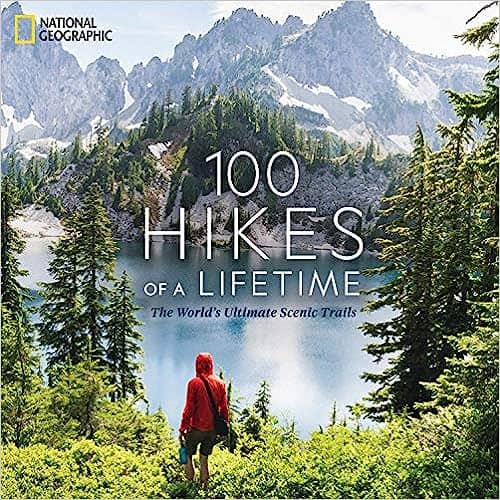
This is a great book. It gives you a lot of inspiration and detail on some bucket list-type hikes as well as useful trail tips.
Summary
Hiking, in general, is a great activity. It gets you outdoors and allows you to experience nature in a whole new way. It’s great for any age, solo hikers and families alike. Day hiking is a great way to explore the many trails of our national forests and state parks. With these simple tips, we hope your next hiking adventure is even more enjoyable. Happy hiking!!

